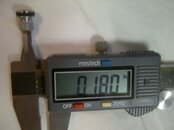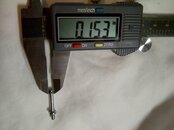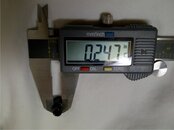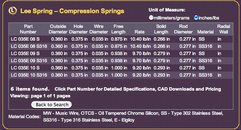After my recent experience with a Scubapro second stage I received that had the wrong spring installed couv suggested that I post some of the dimensions that I believe are the correct ones for a 156 Balanced Adjustable second. I decided a dedicated spring thread were others can post their findings might be easier to find for future reference. It would also be nice if we could find a DIY method of measuring the spring rate also known as the spring constant for these springs. The spring constant (k) is found using the formula k=f/x were f is the force applied to the spring and x is the displacement of the spring. This constant is the only sure way to know if you have a spring that will perform as the factory intended it. I am thinking a postal scale and some method to measure the displacement might work fine.
The photos to follow show the dimensions I got for a used spring from a 156, a used 109 spring and a new G250 spring. As one would expect the 156 and G250 springs are almost identical as they should be. If you have issues with lever height it might be a good idea to check your spring length before you start searching for a new lever, just to make sure it's close to factory spec.
---------- Post added ----------
156 Spring Dimensions
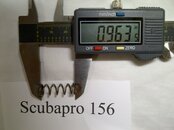

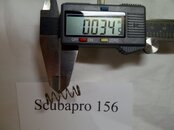
---------- Post added ----------
109 Spring Dimensions
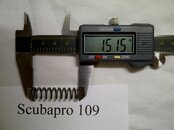
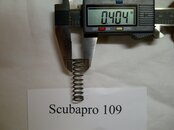
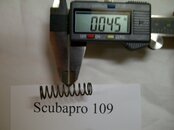
---------- Post added ----------
G250 Spring Dimensions
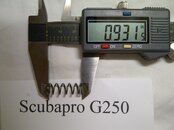
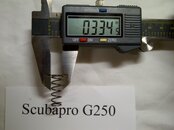
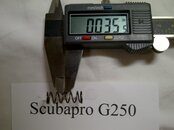
The photos to follow show the dimensions I got for a used spring from a 156, a used 109 spring and a new G250 spring. As one would expect the 156 and G250 springs are almost identical as they should be. If you have issues with lever height it might be a good idea to check your spring length before you start searching for a new lever, just to make sure it's close to factory spec.
---------- Post added ----------
156 Spring Dimensions



---------- Post added ----------
109 Spring Dimensions



---------- Post added ----------
G250 Spring Dimensions






